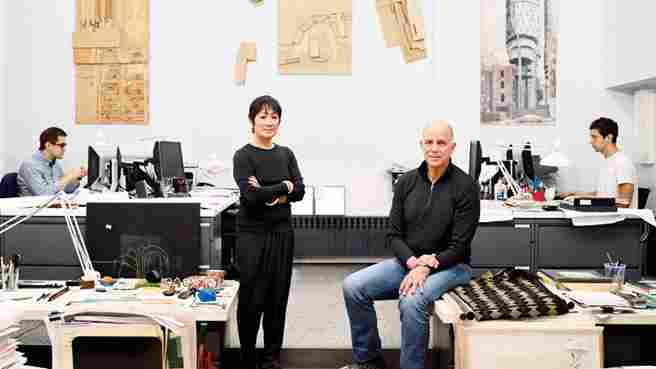View Slideshow

This is turning out to be an exceptionally good year for the husband-and-wife partnership of Tod Williams Billie Tsien Architects . Known for valuing a slow and steady approach to design, the 28-person Manhattan firm has an astonishing four major buildings debuting around the globe in 2012—from Hong Kong to Mumbai to Washington, D.C., to Chicago. But the biggest splash will surely be made by Philadelphia’s Barnes Foundation art museum, whose ribbon-cutting is on May 19. The structure, which clocks in at 93,000 square feet, has a monumentality very much in the tradition of legendary architect (and Philadelphian) Louis Kahn. The comparison isn’t new: Since Williams and Tsien first teamed up, in 1986, their work has been lauded again and again for its robust materiality and timeless sculptural forms. When the Barnes opens its much-debated, highly anticipated home, visitors will experience these qualities in a thoughtful design that captures the spirit of the original galleries while shedding light on a very distinctive collection of Impressionist, Postimpressionist, and modern art. What’s the old adage about slow and steady?
Architectural Digest: There was quite a major controversy surrounding the Barnes’s move downtown from its original 1922 location in Merion, Pennsylvania. When you were selected from a shortlist of architects, were you hesitant to get involved?
Tod Williams: Once we believed it was the right thing to do, we were excited to take it on. There were a number of people who were not happy [about the move], and we met with some of the protesters.
AD: Though the envelope itself is new, you were asked to replicate the interior setting of the old Barnes building so that the paintings could be arranged in the salon style Albert Barnes conceived.
TW: As architects, we’re often asked to do very specific things. The hanging [of the paintings] is unusual to our eyes—we’re not used to seeing such a rich and dense, texturally loaded elevation. But we really came to appreciate Barnes’s eye and his thinking. Now that we look at the work being installed, it’s in the same order, but it’s stronger than it ever was. We’ve certainly adjusted things—the floor, the lighting, the moldings, the plaster texture—little things that I think bring the collection back to life.
AD: The Barnes is one of several major buildings you have opening within a few months of each other. Why?
Billie Tsien: It’s exactly a confluence. These are projects that have been in the office for five or ten years. Because most of them are [for] nonprofits, and they weren’t speculative, [the commissions] didn’t die when the recession happened. [The clients] had their money in place, and then suddenly construction prices fell and everyone jumped in at the same time.
TW: We believe in a slow process, we believe in long engagements. We have to have control over our projects all the way from beginning to end. I think they’re built beautifully because we really know how to put them together.
AD: Long engagements can develop into long relationships with clients. Is there a difference for you between partnering with an individual client, perhaps on a private residence, and working with an institution?
TW: For residential work, it’s easier to say it is a self-indulgent exercise, one that is more about [a client’s] lifestyle and the personality of the architect. Often residential clients don’t have any requirements, and I think that’s too bad. There should not be a requirement that it look like this or that, but there should be an understanding of the relationship between the kitchen and the dining room, for instance—between who makes the food and how they want it presented. And I think the architect needs to respond to that. It would be an enormous act of hubris to overturn the task at hand.
BT: Every time we work with somebody on a project, it changes our lives. Tod and I have been talking about the idea of service and how serving people really makes every project better. So it’s not just about yourself, it’s about the strengths, the power, and the vision of the client you’re serving.
TW: And serving has its own nobility. You can transcend the idea of service alone into something sublime. With institutions, some of which have been around for many, many years, it’s particularly important, because you’re trying to serve something larger than you are.
AD: When you two started your practice, it was rare to be a husband-and-wife architectural team. Why is it less so today?
BT: There are more partnerships, and often they are life partnerships as well. That to me makes a huge amount of sense, because you spend a huge amount of time working. For people to share that, not only is it more convenient, it’s also much richer.
TW: I think the lie of architecture is that it has always been done by single men. Architecture is a collaborative process, it’s a journey that you need support on. I go back to what I said about architecture being a service. If you do it beautifully, then you can call it art.
Click here to see the slide show of Tod Williams and Billie Tsien's work.
